Montenegro is a very tolerant country. Here, side by side, Orthodox and Catholic churches, Muslim mosques and Protestant churches are built and peacefully coexist.
Most of the population, about 75%, consider themselves to be Orthodox, 18% profess Islam, and 4.5% are Catholic.
Orthodox Christians of Montenegro belong to the Serbian Orthodox Church (Metropolitanate of Montenegro and the Littoral). There is also the Montenegrin Orthodox Church, but it is small and not officially recognized by other Orthodox churches. In Montenegro, there are more than 50 monasteries, and interestingly, most of them are men’s monasteries.
In Montenegro, religion is officially separated from the state, however, the obligation of the authorities to provide material assistance to all religious denominations, without exception, is legislatively enshrined.
At the state level, Orthodox Christmas and Easter are celebrated, as well as the Muslim Bayram.
Cetinje Monastery
A winding road leads up, diving into tunnels, between black rocks and shadowy green groves. The sea is below, and then soon is out of sight. Steep cliffs, low houses with tiled roofs… The villages that consist of two or three streets, small roadside cafes, road signs that warn you that a cow may cross the road... The car goes around another turn, and suddenly a magically beautiful old city spreads in front of you‒ with royal palaces, luxurious former embassy mansions, theaters and piazzas. You are in the ancient capital of Montenegro, in the city of Cetinje.
The capital has long been transferred to Podgorica, along with museum in the royal chambers, and a library in the French embassy. But the main thing does not change: the city has always been and remains the spiritual heart of Montenegro, because here, on a slope of the Eagle Cross mountain, stands the Cetinsky Monastery, the residence of the Metropolia of Montenegro and the Littoral of the Serbian Orthodox Church.
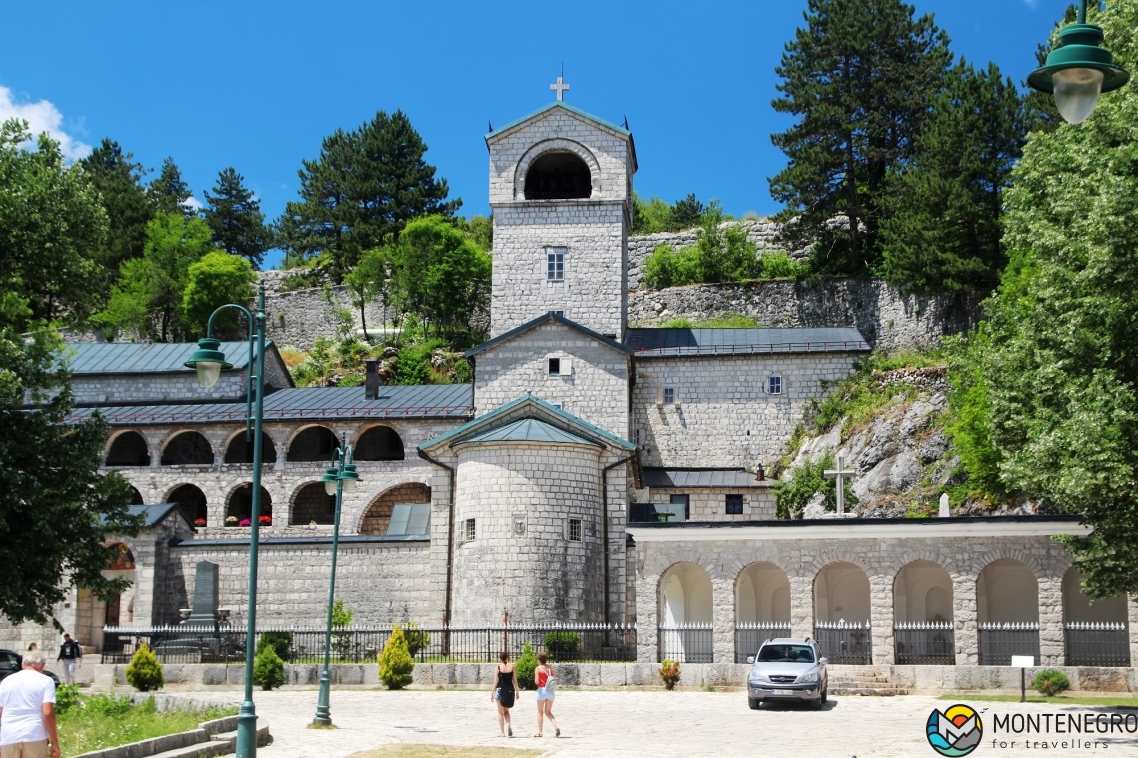
Since its foundation five hundred years ago, the Cetinje Monastery has been and remains the seat of the leaders of the Montenegrin Orthodox Church. Not a single turn of the heroic history of the country passed by its soaring white-stone walls. The story of the monastery echos the main events that shook this nation during five turbulent centuries.
Turkish conquerors pushed Ivan Crnojević, the ruler of Zeta — the ancient Slavic state, from the blissful shores of Lake Skadar to the harsh, and cold, but unreachable to enemies, place at the foot of the Mount Lovćen at the Cetina river. The Lord of Zeta built a new capital and metropolitan residence there. Like many monasteries of the Middle Ages, the Cetinje Monastery looked like a fortified bastion: at the center — the Church of the Holy Virgin and the monks' cells, and around them, sturdy walls with loopholes, a moat with water and a sharp paling. Montenegrin enlightenment was born behind that powerful walls: in the monastery printing house "Oktoih Pervoglasnik" was typed in Cyrillic — the first printed book of the southern Slavs, and the other books that are stored today in the treasury of the monastery.
These were gruelling years for the young state: the constant Turkish raids and the Christian wars against the Ottoman Empire destroyed the walls of the Monastery over and over again.
At the end of the 17th century, the Cetinsky Monastery was almost completely destroyed. During the Turkish siege, the Montenegrins and their allies, the Venetians, had to retreat. As they left, they mined the monastery, and more than 300 Turkish soldiers were killed by the explosion. In retaliation, the Turkish Pasha ordered to completely wreck all that remained of this glorious monastery. The ruins of the fortifications have survived to this day. And in place of the old monastery now stands the Church of the Nativity of the Blessed Virgin.
The monastery was restored in all its splendour in 1701 by the first ruler of Montenegro from the Njegoš dynasty, Metropolitan Danilo. He built new walls with the stones left from the original construction. The stone carving with a double-headed eagle, the emblem of Ivan Crnojević, reminds us about the strong mentor of Zeta. Above the entrance, an old slab tells the story of the monastery, and the columns of the arcade on the second floor, are decorated with the old carved capitals.
The history of the monastery is inextricably linked with the name of Petar I Petrović-Njegoš, who was later canonised as Saint Peter of Cetinje. All his life Petar I defended his country and Orthodoxy from foreign invaders. His cell and his remains are preserved in the monastery.
The monastery took on its modern grand appearance after the last reconstructing in 1927.
Priceless relics are kept in a small cell in the main church dedicated to the Nativity of the Most Holy Mother of God: the right hand of John the Baptist, which he, according to the Bible, laid on the head of the Son of God during Baptism, and a piece of the Holy Cross.
Believed to have come from Jerusalem where St. Luke painted it from life in year 46, the icon of Our Lady of Philermos also has a place of honor in Cetinje.
The militaristic order of the Knights Hospitallers adopted Our Lady of Philermos as their patron and took the image with them when the Turks drove them out of Rhodes in 1522. For many years, the Knights and the icon resided in Malta. After Napoleon conquered Malta in 1798, the Philermos icon moved to Russia, where it was presented to Emperor Paul I, now Grand Master of the Order, at his residence in Gatchina, 30 miles from St. Petersburg. From then on, Russian Orthodoxy has honored the Mother of God of Philermos on this date (October 25 in the modern calendar). The icon survived the Russian Revolution of October 1917 because it had moved from the royal palace in St. Petersburg back to Gatchina for the occasion. In 1920, Empress Maria Fyodorovna took it with her when she fled to Denmark. After her death the Orthodox clergy moved the sacred image to Belgrade, then, in 1941, to a Montenegrin monastery to hide it from the Nazis. In fact, it hid so well that it was believed to be lost until its rediscovery there in 1997, with most of the jewels still intact.
The Mother of God of Philermos icon now illuminates the Blue Chapel of the National Museum of Montenegro. It is said that its price exceeds ten times the budget of the country. The monks from the monastery claim that it is priceless, and must be kept in the monastery.
The Ark with the right hand of John the Baptist can be seen by everyone who came to worship the holy relic.
Thousands of pilgrims come here today to join the spirit of ascetic and holiness that these walls emerge. The rainy Cetinje, which has preserved the enchanting view of the historical and cultural capital, will always remain a city that carries essence of Orthodoxy.
Ostrog Monastery
It seems as a miracle that the major Christian pilgrimage world sites are in such a tiny country. Ostrog Monastery is the third most visited holy place after the Church of the Holy Sepulcher and the Holy Mountain in Jerusalem. And this is despite its remote and hard to reach location. The monastery is carved into an almost vertical cliff, one kilometer above sea level, at the base of the rock of Ostroška Greda. But the harder the path, the greater the pilgrimage achievement.
A narrow mountain road, off the Nikšić-Podgorica highway, leads along a ridge, so it is recommended only to experienced drivers. However, it is nothing to worry about: according to the legend, Sv. Vasilije Ostroški guards this road, therefore, no accidents have occurred so far.
Ostrog Monastery is not the oldest of the Serbian Orthodox Church monasteries. However, monks have settled in the caves around here for forever.
The Monastery was founded by Vasilije, the Metropolitan Bishop of Herzegovina in the 17th century. He died there in 1671 and some years later he was canonized.
Sv. Vasilije Ostroški spent all his life in monasteries. He was raised a diligent and obedient child in Zavala monastery. His character quickly made him a master of the Bible and the Christian mysteries, and his humility and dedication to the Church made him well suited for the Bishop position.
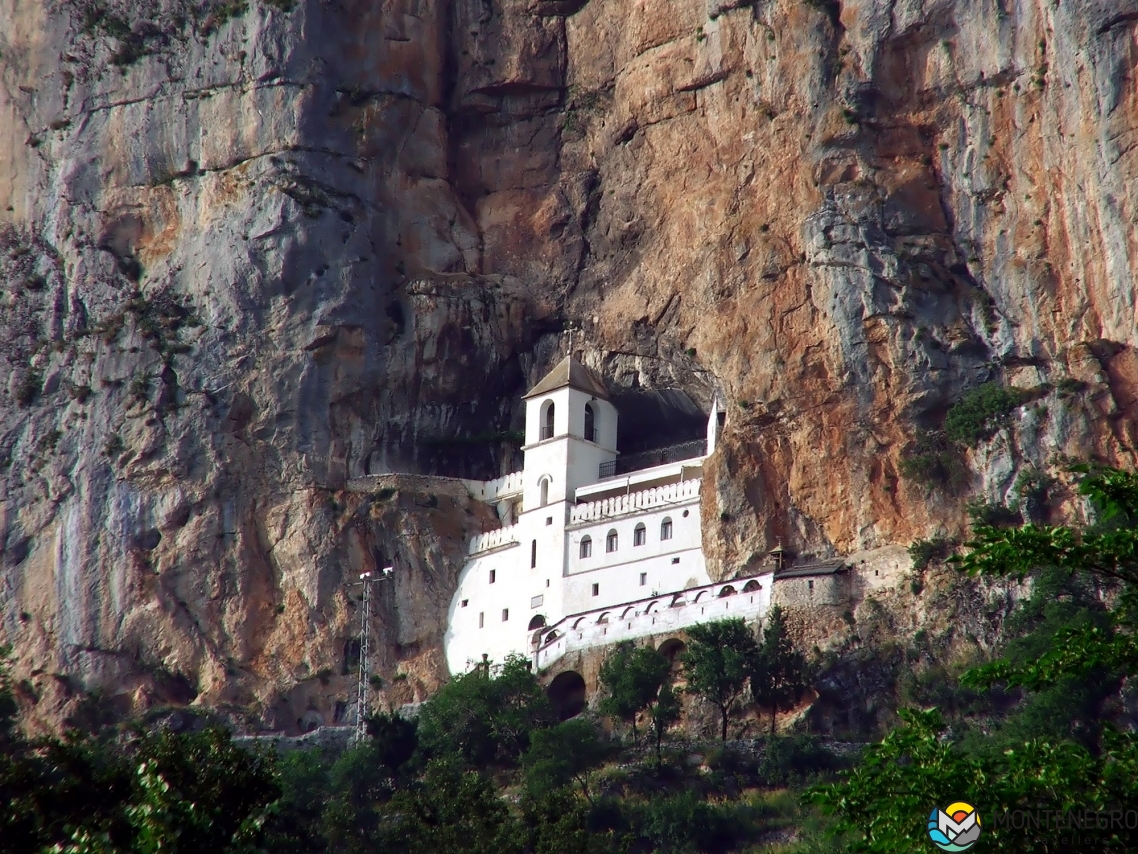
The monastery complex consists of two parts, upper and lower. The lower monastery centers around the Church of the Holy Trinity that was built in 1824.
Nearby stands the Church of the Holy Martyr Stanko, built in 2004.
The story of this saint is also associated with Montenegrin opposition to the Muslims. At the beginning of the 18th century, Turkish soldiers cut off the arms of fifteen year-old Stanko and left him die bleeding. The boy accepted a terrible death because he did not obey an order to deny Christianity and to throw a cross to the ground. The imperishable hands of the martyr now rest in the church.
Also, remains of 27 members of the Royal Army who in October 1943 defended Ostrog from the communists rest here in peace.
A winding path, called the Road of the Saint Basil of Ostrog, leads to the upper part of monastery.
The upper monastery houses the Church of the Presentation and the Church of the Holy Cross.The churches are adorned with remarkably beautiful and expressive frescos by Radul, best-known Serbian artist of the 17th century.
Saint Basil of Ostrog's relics lie in the Church of the Presentation attracting a stream of pilgrims.
There are so many visitors that it is almost impossible to stop. Peoples leave small paper notes in the cracks of the walls, in hope that their dreams and wishes will come true. Believers come from all parts of the world, individually or in groups. Ostrog represents the meeting place of all confessions: the Orthodox, the Catholics as well as Muslims. According to the stories of pilgrims the relics of its founder, St. Basil of Ostrog, have miraculous power and heal even hopelessly sick.
The very existence of the monastery is already a miracle: in 1942, when Germans bombed the Ostrog monastery, a large artillery shell struck the door to the church of Holy Cross and fell to the floor. The detonator was separated from the shell, but there were no explosion. Studies have shown that the shell was absolutely fine and had to burst, which would cause a great damage. However, this did not happen. This shell can now be seen at the top level of the church.
In front of the church, at the place of the death of St. Basil, with no grain of soil, grows a “golden” vine. Grapes from this vine have a miraculous effect on women with conception difficulties.
Holy water from the nearby spring protects from all kind of deprivations.
The Orthodox monastery of Ostrog is one of the most frequently visited in the world. People climb the steep and dangerous path looking for healing powers. It is traditional for pilgrims to walk barefoot or even crawl on knees, but there is a minibus for simple tourists. Firm believers spend the nights there before Orthodox holidays under the open sky. The sounds of worship at dusk are heard from afar and a view of the Zeta River valley is simply stunning.
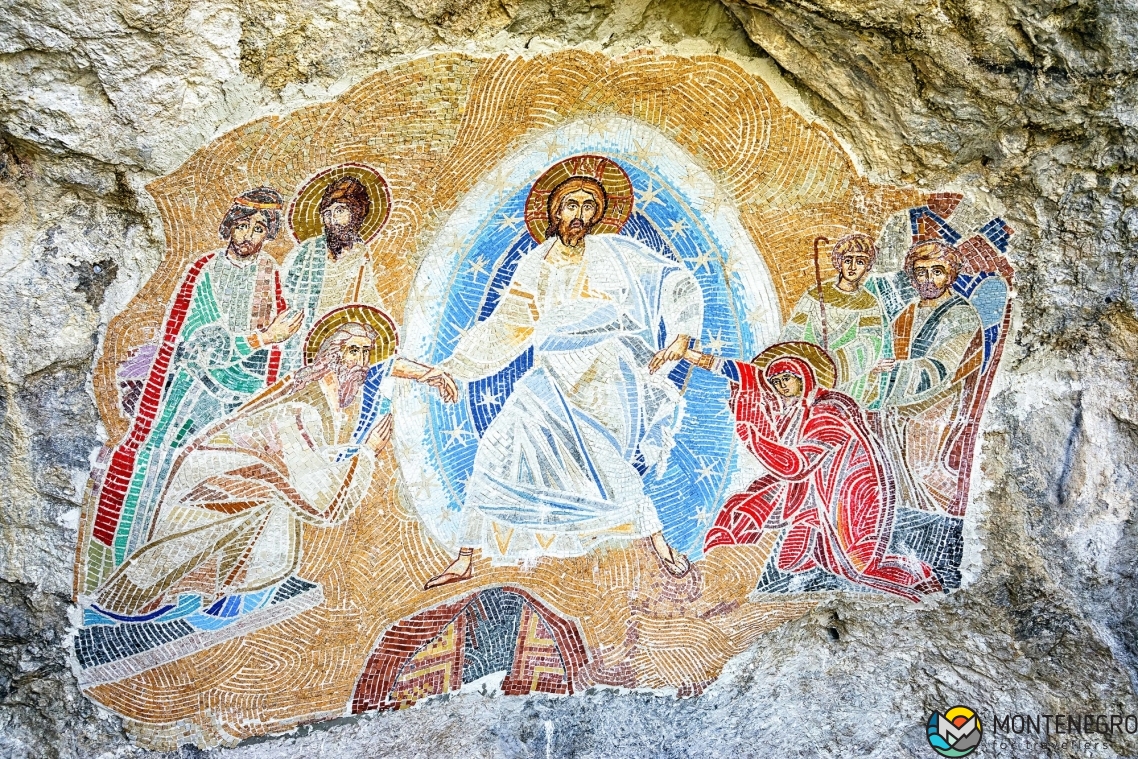
Morača Monastery
The Morača Monastery of the Metropolitanate of Montenegro and the Littoralis is one of the most important religious sites, not only for Montenegro, but for all the Balkans. It is located high in the mountains, on the bank of the River Moraca, and conveniently near the highway. This is truly a peaceful and picturesque place.
Stefan, a son of Vukan Nemanjić, the Grand Prince of Zeta, founded the monastery in 1252 on his own land.
The architectural complex of the monastery includes the large Cathedral of the Assumption of Our Lady, the smaller Church of St. Nicholas and several buildings with cells and facilities. The churches are built in unique Rascian style.
Besides the architecture, its frescoes are of significant importance and the best examples of Serbian and Byzantine paintings. The oldest fresco depicting eleven scenes from the life of the prophet Elias date to the 13th century, while the rest date to the 16th century.
Podmaine Monastery
Podmaine Monastery is a Serbian Orthodox monastery built in the 15th century by the Crnojević noble family in close proximity to Budva. The name comes from the nearby Maina area. Petar II Petrović-Njegoš wrote parts of his masterpiece The Mountain Wreath in Podmaine Monastery.
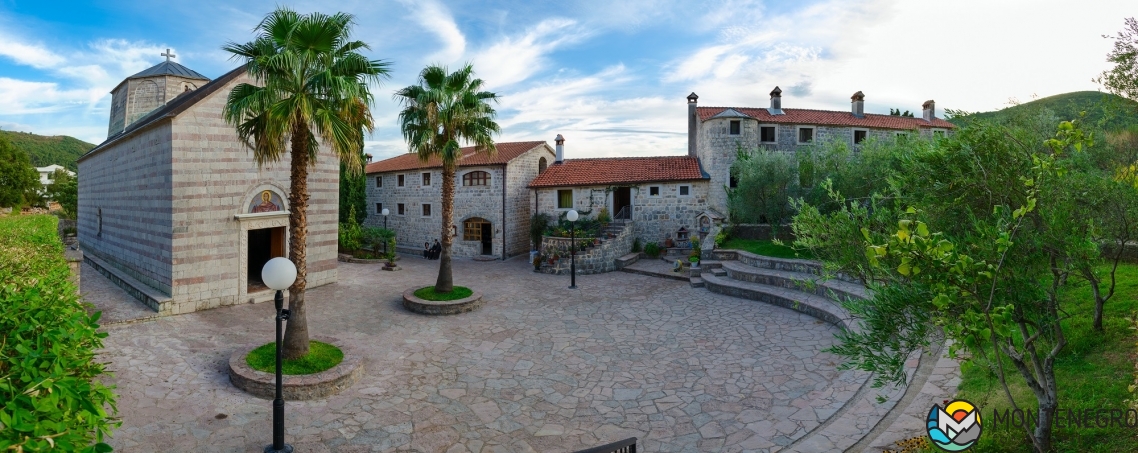
Savina Monastery
Working Savina monastery is a Serbian Orthodox monastery, which consist of three churches near the city Herceg Novi in the Bay of Kotor, one of the most beautiful parts of the northern Montenegrin coast. It was founded by Stjepan Vukčić Kosača, the Duke of Saint Sava.
Above the entrance to the oldest building, the small Church of the Assumption of the Blessed Virgin Mary, the inscription "1030" is still visible. The walls of the temple are decorated in classical Byzantine and Gothic styles
The Church of St. Sava, a legend says, was built by Saint Sava in 13th century.
Architect Nikola Foretić created newest Great Church of the Assumption in 18th century. It houses main monastic shrine — the icon of the Savina Mother of God.
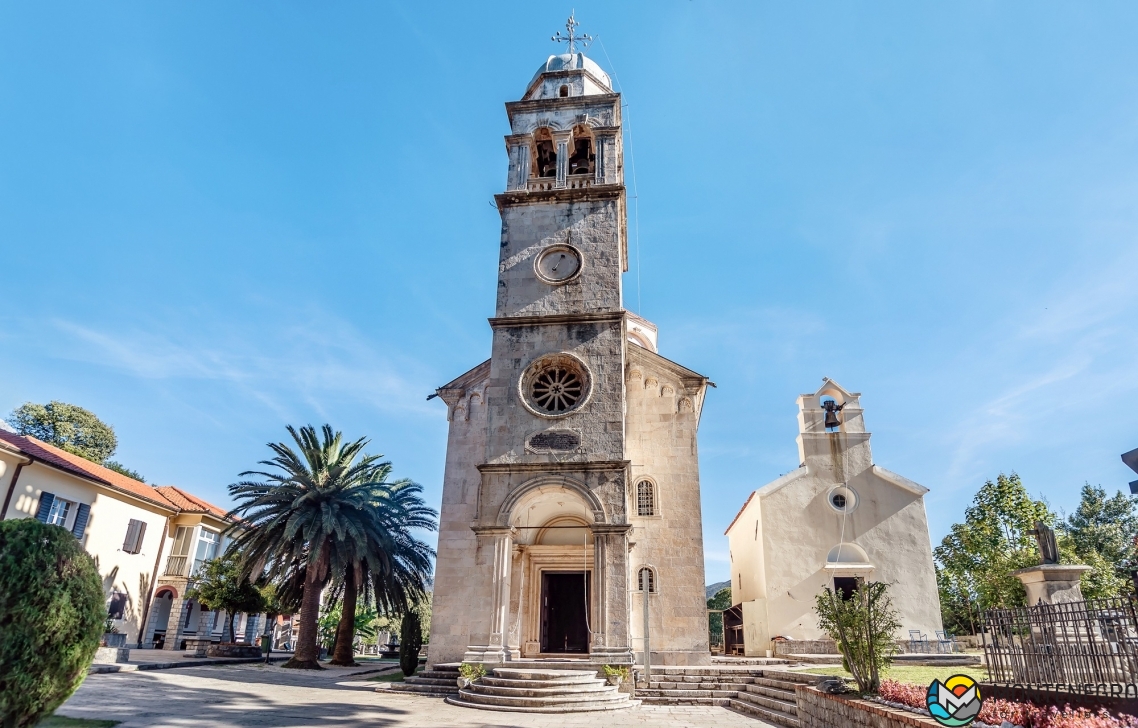
Holy Trinity Monastery of Plevsky
The Orthodox monastery of the Holy Trinity is a monastery of the Mileshevsky diocese of the Serbian Orthodox Church. It is located in the north of Montenegro, near the town of Pljevlja, 60 km from the Durmitor National Park.
The first documented mention of the monastery dates back to 1537, although some researchers indicate the date of foundation even before the Ottoman conquest of the area in 1465. Constant wars led to the monastery being repeatedly destroyed and rebuilt.
Throughout its long history, the Monastery of the Holy Trinity was the spiritual, cultural and educational center of the country, a library and a workshop for decorative art. There were over a dozen books written here, and today in the library of the monastery, tracts and manuscripts of the XII-XIV centuries are kept.
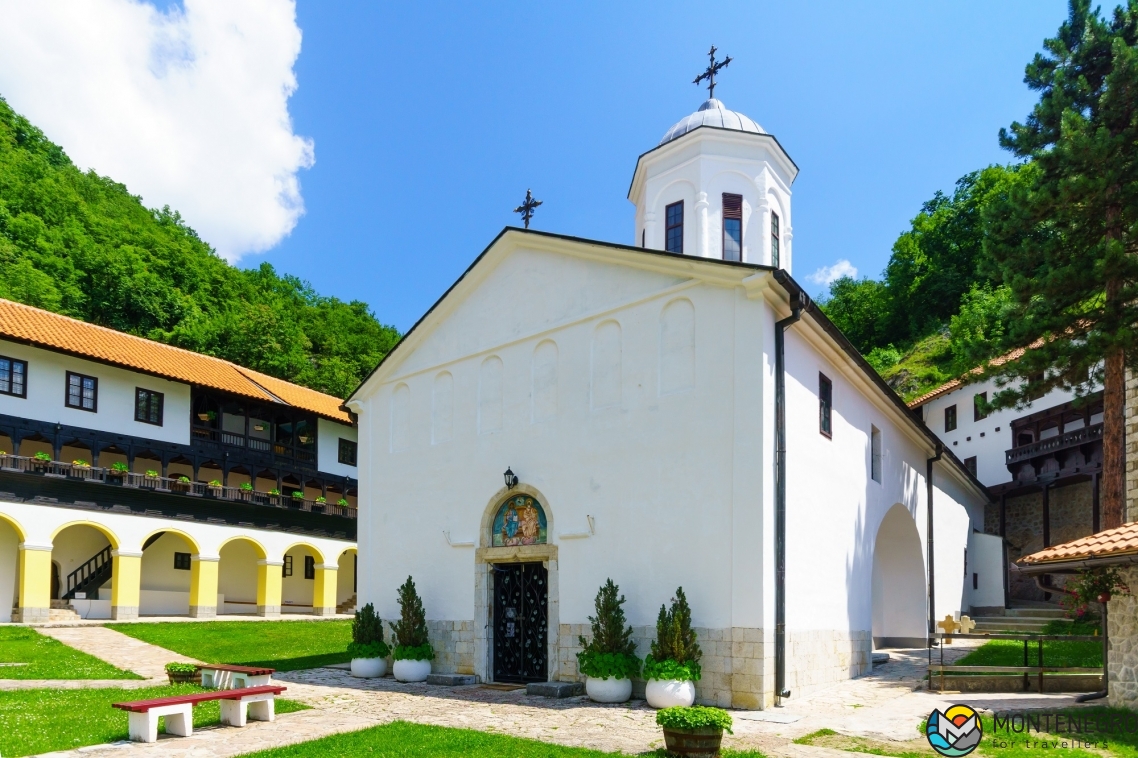
Piva Monastery
Piva monastery of Budimlja-Nikšić diocese of the Serbian Orthodox Church is located in the northern part of Montenegro, near the Lake of Piva, and is considered one of the most important religious places in the country.
Built between 1573 and 1586, it is the largest Serbian Orthodox Church constructed during the Ottoman occupation in the 16th and 17th centuries. Famous for its frescoes, the monastery also houses rare books, art, objects of precious metals and a psalm from the Crnojevići printing press, the first printing press in the Balkans. The monastery was originally located at the source of the Piva River, approximately 3 kilometres away from the junction of the proposed hydroelectric plant Mratinje Dam. In 1970 the monastery was moved, stone by stone, to its current position, which included the removal and replacement of over 1,260 square metres of the precious fresco fragments.
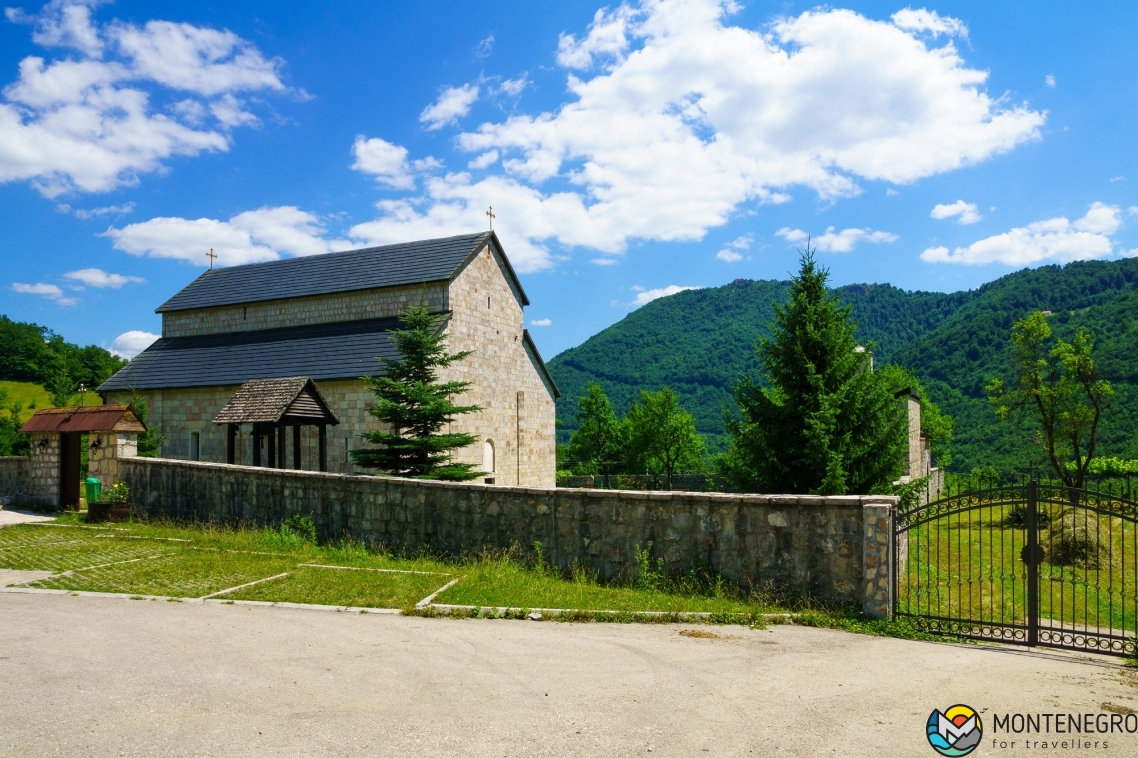
Monastery Dajbabe
Established in 1897, Dajbabe monastery, near the capital city of Podgorica, houses a remarkable Church of the Assumption of the Holy Virgin inside a cave, where the low bumpy walls are bestrewn with religious paintings. The system of internal caves has a shape of a cross, there is also an underground source of fresh water. There is evidence that these catacombs were used by Christians even before the appearance of Slavic tribes in these places. In the era of the Ottoman Empire, shelters in the Daibabe mountain were used by many Montenegrins, and as a hiding-place for the Orthodox relics.







